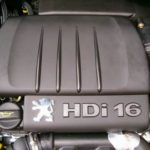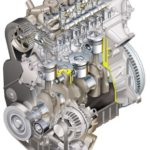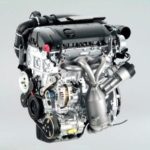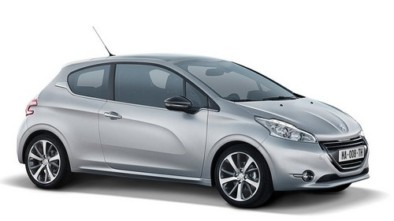Peugeot 508 2010 - 2018 - Used car, experience, breakdowns
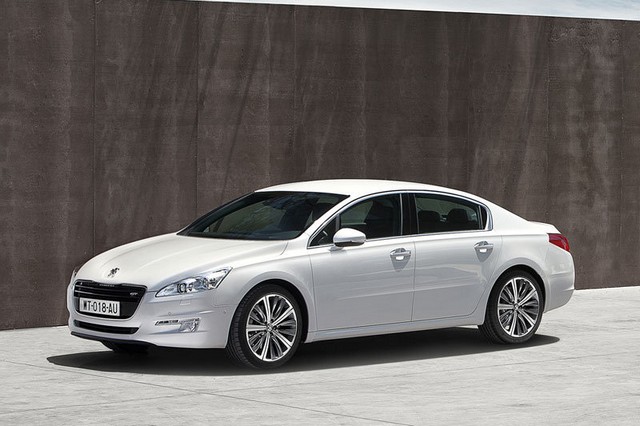
As the number says, Peugeot The 508 replaced two models at the same time, the 407 and 607. The car has thus adapted to the trend of the European market since the late 90s. The Peugeot 508 had a rather difficult task in its creation. The Peugeot 508 had to improve its image and restore fame in middle-class vehicles with a lion on the hood. Sure, many drivers remember the legendary Peugeot 405 or 605. The successors did not go so glorious, because most of the blame lies with unreliability. As practice shows, the 508 has learned from the many shortcomings of its predecessors and improves reliability.
Peugeot The 508 passed the Euro NCAP test in 2011 and received five stars.
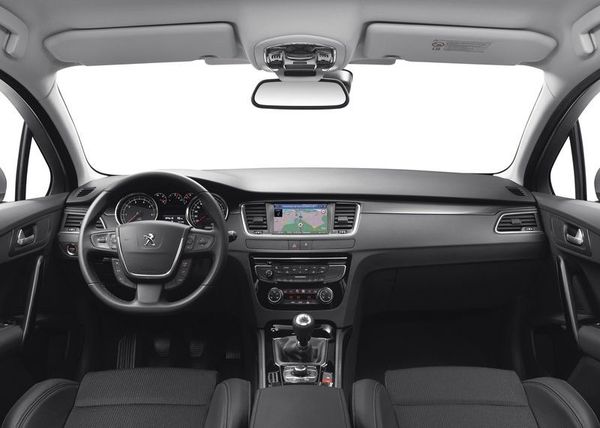
The Peugeot 508, with its length of 4792 mm, was between the two models it replaced. Compared to the 407, it is 101 mm longer, and in the case of the 607, 79 mm shorter. Compared to the Peugeot 407, it is 14 mm taller and 42 mm wider. Despite the increase in exterior dimensions, it is 407 kg lighter (sedan) compared to the 25. about 45 kg (wagon). Low drag coefficient of 0,25 (0,26 in the case of caravans).
Interior space benefits from an increase in exterior dimensions, though it has an average of seats compared to competitors.
The interior finish, including the materials used, is at a satisfactory level, and the ergonomics of the controls are also commendable, despite the relatively large number of buttons. The reduction in the number of buttons came with the upgrade in 2014, when some of the functions were taken over by the touch screen.
The Peugeot 508 has a base boot volume of 515 liters, after we fold down the rear seats the volume grows to 1381 liters. The station wagon version has a trunk volume of 560 liters after lowering the seat rises to 1598 liters. The boot volume data, however, refers to the so-called tire repair kit. In the case of a spare wheel, the trunk will lose 42 liters. The GT version has a 16-liter smaller trunk compared to the classic versions.
Peugeot 508 - Engines
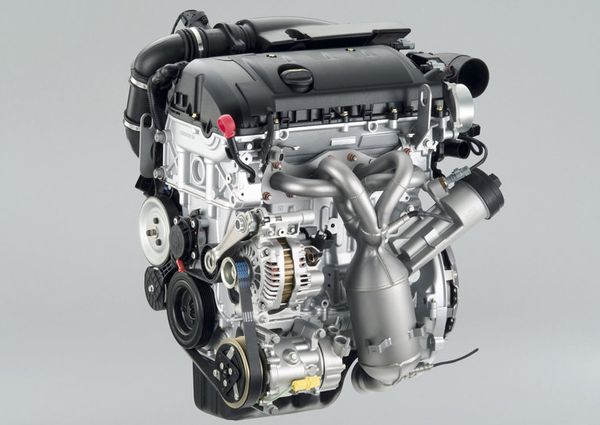
Gasoline engines
Peugeot 508 1,6 VTi motor
The basic gasoline on offer is a 1.6-liter turbocharger 1.6 VTi (88 kW) at 6000 rpm and torque of 160 Nm at 4250 rpm (90% of torque is available in the range 2500 to 5750 rpm). The engine has an aluminum block and head, variable intake and exhaust valve opening times, and variable intake valve stroke. Its performance is cultured, but when combined with the heavy 508's, the driving dynamics are just average. For faster acceleration, for example, it is necessary to hold the engine at higher rpm when overtaking. Consumption averages about 7,5 liters, an increase of 1-1,5 liters on highway driving.
Peugeot 508 1,6 THP engine
The turbo version 1,6 (Turbo High Pressure) with 115 kW at 5800 rpm and a torque of 240 Nm between 1400 and 4000 rpm includes direct fuel injection and a turbocharger with water cooling. The cooling circuit of the turbo engine runs for some time after the engine has been switched off, and so the turbocharger is cooled and protected from overheating. The engine accelerates at low speeds and acceleration at higher speeds provides exciting sound. Dynamics satisfy faster driving, acceleration is smooth over a wide range of speeds, but with less top performance. Consumption is about 8 liters in normal use, increasing the capacity to more than 10 liters.
Diesel engine
Peugeot 508 1,6 HDi engine
A much higher representation under the hood is the diesel engine, especially if the vehicle is imported. The base is a 1.6 HDi 8V with 82 kW, which, depending on the version, has a different maximum torque. The classic 1.6 HDi with a five-speed manual transmission has 240 Nm (254 Nm) at 1750 rpm, the 1.6 e-HDi version with a 270 Nm (285 Nm) robotic six-speed gearbox at 1750 rpm. The engine is characterized by cultivated operation and consumption that averages around 5,5-6 liters. Engine dynamics are more in favor of quieter drivers, less acceleration is felt especially when it comes to acceleration under load or acceleration at high speeds.
Peugeot 508 2,0 HDi engine
Significantly more dynamism is offered by the 2.0 HDi, available in two power versions. With manual transmission, it has a power of 103 kW and a torque of 320 Nm (340 Nm). The version in combination with the automatic transmission has a power of 120 kW and a torque of 340 Nm at 2000 rpm. The engines provide the Peugeot 508 with good dynamics at a consumption of around 6,5 liters, with an automatic of about a liter more. Compared to the smaller 1.6 HDi, the two-liter engine will have much better thrust at lower speeds, but must be accustomed to a slight turbo hole below 1800 rpm, where the response to the depressed accelerator is a bit lethargic. With the arrival of the new two-liter Blue HDi, engine performance has been improved at lower revs, driving dynamics have been slightly improved and average consumption has been reduced.
Peugeot 508 2,2 HDi engine
The top of the diesel range is a 2.2 HDi (DV12C) with a power of 150 kW and a torque of 450 Nm at 2000 rpm, combined with the Aisin AM6 automatic transmission. The engine is based on the older twin-turbo version (DV12B - 125 kW). He got new injectors with eight holes, where the compression ratio dropped from 16,5 to 16,0: 1, the shape of the combustion chamber was changed. At lower revs, the engine is marked by a significant delay in starting the turbocharger. The average consumption is around 7 liters, but more frequent use of engine dynamics increases consumption to 8-9 liters or more.
The hybrid version should also be mentioned. As already mentioned, the turbo diesel 2.0 HDi (120 kW) drives the front wheels and the 27 kW electric motor that drives the rear wheels. The maximum power of the whole system is 147 kW, and the torque is 450 Nm. Both units can drive the car together or independently of each other. According to the selected mode, the vehicle can only be front-wheel drive (diesel), rear (electric) drive or hybrid drive on both axles. The rear electric motor is supplied with the necessary electricity by means of a special alternator up to 8 kW. Consumption while driving quietly in the city can reach 4 liters, but the total average is about 6 liters. The vehicle weighs 1,9 tons, which is about 250 kg more than the classic version 2.0 HDi.
The Peugeot 508 has several types of transmissions. Most often, a six-speed manual, which is characterized by relatively precise operation and soft clutch control. There is also a classic automatic transmission with a hydrodynamic converter and six gears from the Japanese company Aisin. This automatic is slightly slower compared to dual-clutch transmissions, and the hydrodynamic converter goes with an average consumption of 0,5 to 1 liter higher than a manual transmission. On the other hand, the transmission is very soft and shock-free, which makes it easier for drivers to enjoy driving comfort.
1.6 e-HDi and 1.6 VTi engines are coupled to a sequential six-speed gearbox with either a manual transmission or a handlebar under the steering wheel. In normal driving the transmission is so good and without significant jerk. Worsening the situation happens in faster driving when slow, and sometimes it takes more time to think about appropriate repositioning, which is accompanied by significant jerk. Problme is a slower change, for example. in the column where the accelerator pedal needs to be handled carefully, otherwise it will start with a slight jerk.
Peugeot 508 - breakdowns and problems
The Peugeot 508 shows that the carmaker is seriously considering improving the reliability of its vehicles. Overall, however, the Peugeot 508 can be rated as a good level of reliability.
Occasionally, sporadic power problems occur, sometimes there is a problem with parking sensors, navigation, sometimes an alarm or central locking. Much of the electronics problem has been solved by software upgrades. When purchasing, the functionality of the air conditioner must be checked. Chassis resistance is at a decent levelHowever, the braking components show poorer life, especially because of the relatively high weight of the vehicle.
The VTi and THP engines of the EP series contain the so-called a maintenance-free chain that should last the entire life of the engine, and replacement should be in rare cases. Unfortunately, the reality is different and the chain belongs to the weaker parts of the drive unit. While the atmospheric VTi problems were very well eliminated and the chain had to be changed in the case of higher mileage, in the case of 1,6 THP, the resistance of the chain to torsional vibrations is significantly worse. In addition to the stretched timing chain, a hydraulic spanner is often a problem. A stretched chain also makes a higher noise level, problems with uneven engine operation, or a warning light about engine failure appears, because a stretched chain causes the transmission of incorrect information (phase shift) from the camshaft sensor. and a crankshaft to the engine control unit. In the event of a failure, the chain skips, which means engine failure and, in some cases, engine damage.
On VTi and THP petrol engines, problems can be caused by VVT solenoid valves, in addition to the engine failure lamp, engine shutdown, power loss or sudden acceleration can occur. With petrol engines, there is also an ignition malfunction, the engine runs on fewer cylinders - uneven operation, jerking and the like. Preventing ignition coil damage is a regular replacement for spark plugs. It is recommended not later than 50.000 km, and for more frequent worship in the city, it is recommended to replace the candles at 30.000 km. Occasionally, an engine malfunction lamp appears on a gasoline engine due to a faulty oxygen sensor - a higher risk if the vehicle is driven more frequently on shorter routes.
For 1,6 THP engines, excessive soot deposition occurs over time, especially in the intake section and on the intake valves. This is due to the recirculation of exhaust gases containing soot particles, as well as oil vapor that penetrates the intake manifold through the crankcase ventilation system, as well as around the piston rings that have low pressure on the cylinders for the lowest friction losses. Such oil gases then carbonize and bury the engine with carbon. In addition to suction and suction valves, soot is also deposited in the combustion chamber. Together with deposits on the intake valves, carbon deposits in the combustion chamber cause detonation combustion. During engine operation, the soot gradually heats up to a high temperature and causes self-priming of the injected fuel. The detonating combustion sensor records these signals and sends a pulse to the control unit, which then reduces the angle before ignition to avoid detonating combustion. The ignition of the mixture is delayed so that it burns late and will not be able to deliver all its energy. The result is a loss of power and an increase in consumption. With a long-lasting detonation problem, there are problems with pistons and engine damage. As a preventive protection, it is recommended to add quality fuel or occasionally add additives to the tank. In addition to cleaning, these additives or ingredients reduce and eliminate the accumulation of soot. Importantly, these fuels or products should be used regularly (ideally, after each refueling, min. Every other third-tank), single or short-term use has no significant effect.
Sometimes 1,6 THP motors have a problem with falsely indicating the coolant temperature, resulting in the engine not warming up to the engine operating temperature.
In case of higher mileage, sometimes problems are caused by electricity. control of the turbocharger (engine), resulting in a reduction in engine power.
With higher mileage, coolant leaks. The water pump is mainly to blame for this leak.
With higher mileage, the following problems can occur: turbocharger overload control - blades (loss of power, engine failure lamp) or excessive nozzle wear, resulting in uneven and noisy engine idling, poor cold start, poorer performance or at full power (excessive overflow) fuel) and the engine goes into safety mode and the engine power light is on. In practice, there are problems with piezoelectric injectors used in 1,6 HDi 8V (Euro 5) motors. Injectors have a shorter service life and a slightly higher frequency of failure. Attention should also be paid to overloaded vibrations, jerking while driving or accelerating from lower revs with noise.
Higher mileage comes with problems with the EGR valve (more frequent urban short-distance driving), which is manifested by the jerking of the engine during acceleration, also by repeated shutdown shortly after starting and the engine failure lamp illuminated. Greater turbocharger wear is usually manifested by the penetration of oil into the intake tract, lower (fluctuating) performance, or greater noise.
For diesel engines, it is advisable to top up with high quality diesel and change the fuel filter regularly. The greater the amount of impurities contained in the diesel fuel, the faster the filter is clogged, resulting in less acceleration or loss of power at higher rpm. More impurities are, of course, a risk even for clogged injectors, leading to a difficult start or malfunction of the engine. Often the injectors can be cleaned professionally, but sometimes cleaning does not help. With more miles, oil leaks can occur, which is often the result of crankcase ventilation leaks.
With the 1.6 HDi, due to improper oil pan design, it is not possible to drain all the oil from the engine, so it is recommended to change the engine oil more often (up to 15.000 km, preferably 10.000 km), and from time to time (at least once every 100 km) disassemble and thoroughly clean the oil trough. Otherwise, the deposits that remain at the bottom contaminate the content of the new oil, which has an adverse effect and causes greater wear of the engine and its components.
Diesel engines are equipped with a particulate filter (FAP), and the service life varies depending on how the vehicle is used around 200.000 km. Sometimes the life of the filter is longer, but sometimes even shorter, especially if the vehicle is used for shorter routes, city driving, the filter fails to regenerate well. Filter problems usually occur with the help of an indicator light. switching the engine to safety mode. Approaching the end (clogging) of the FAP filter is usually reported with an increased frequency of regeneration with a slight increase in consumption. Of course, the condition of the engine, injection system and EGR valve also affects the life of the DPF.
With manual transmissions, sometimes more noise occurs at certain speeds, but this is not a fault, but a structural feature. With Aisin automatic transmissions, worn-out hydraulic valves are encountered at higher mileage, leading to transmission problems. The problem is mainly to maintain the quality and regular oil change.
In the case of sequential gearboxes, mechatronics failure, but also excessive bearing clearance or worn gears, can occur in the case of higher driving, which, in addition to various sounds, also reveals an excessive amount of metal waste in the oil.
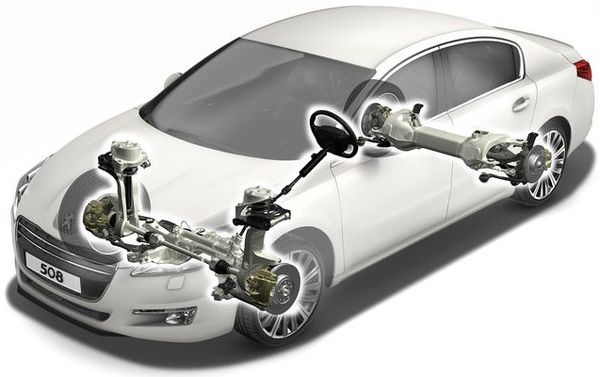
Service - Peugeot 508
Oil change is recommended after 15.000 km or 1 year, despite the manufacturer's regulations (20.000 km). Gasoline engines have a drive chain that does not have a specific replacement interval. Replacement with other components of the chain mechanism is necessary only when the noise is more pronounced. Diesel engines have a replacement interval set at 240,000 km or 10 years, but it is recommended to shorten the interval to 150-160,000 km or 8 years. For diesel engines, it is also worth adding an additive for a FAP filter called Infineum, usually 100.000 km.
Used Peugeot 508 prices - overview
Recommendation of similar texts:

Hi there, I am Mladen and I am an auto enthusiast. I started this blog years ago to help like minded people share information about latest cars, car servicing ideas, used car info, exotic cars, and auto technology. You will find helpful articles and videos on a wide variety of cars - Audi, Mercedes, Toyota, Porsche, Volvo, BMW and much more. Ping us if you have anything cool to share on latest cars or on how to make older cars more efficient, or just want to say hi!




